Angels in the Wilderness
When I began writing my recently published book, Angels in the Wilderness: Young and Black in New Orleans and Beyond, I had to ask myself, Why am I, this older white guy, a retired Episcopal minister, writing about young African Americans from my longtime home, New Orleans? The answer is simple: No one else seems to be doing it, and these inspiring stories, and stories like them throughout our nation, must be told.
One of our fine New Orleans Times-Picayune columnists, Robert Mann, wrote in his September 17, 2017, column that “Louisiana is sick and dying.” He made a strong case for our problems: political corruption, the huge rate of poverty among our children, unemployment, pollution, and maybe worst of all, our blindness to what is going on. New Orleans leads the state in these problems. I would add to this list: the high incarceration rate, in fact, the second highest in the nation.
I agree with his diagnosis. New Orleans, like many of our America cities, may be sick. But we are not dying. The reason we are going to get well someday is because we have young people, like those in my book, who are going to lead us into our future with love and a commitment to justice.
Over the last nine years I have had the privilege of getting to know quite a few young African Americans in various New Orleans groups. Believing that the most important thing about any one of us is our personal stories, I asked many of them—once I gained their trust—to tell their stories, which I recorded and transcribed. Some of the storytellers had written stories that I helped edit through my work with the program called College Track. I also asked the mentors of the young people, such as coaches and clergy, to tell their stories.
The young and older storytellers in the book are the angels in the New Orleans wilderness, who, along with many other young people like them, will breathe new life into what may indeed be a sick city and state. The storytellers range from young Mardi Gras Indians to grassroots activists to students and church members. Robert Mann will be pleasantly surprised.
The title of the book comes from the first chapter in Mark’s Gospel: Satan has driven Jesus into the wilderness, a terribly harsh place, for forty days and nights. The wild beasts are after him. And then we are told that the angels ministered to Jesus (Mark 1:12–13, Revised Standard Version).
Besides inviting the “angels” in this book to tell their stories, I regularly ask others in various groups I have been part of to tell their “angels in the wilderness” stories. I find that this is an excellent way for me to get to know people and for them to get to know each other.
I have selected at least one story from each of the chapters within the book to highlight the range of experiences and voices of these New Orleans luminaries.
Chapter One
Mardi Gras Indians in New Orleans began in the 1880s as African Americans wanted to start their own organizations (they were excluded from white Mardi Gras parades and balls). They called themselves Mardi Gras Indians because—as the tradition has it—many runaway slaves had been protected by Indian tribes in South Louisiana before the Civil War ended slavery in our country. This was their way of saying thanks.
Every Mardi Gras, twenty-five Indian tribes roam the city of New Orleans wherever they choose, marching, dancing and singing—no police escorts, no one telling them where their tribes can walk for a period of about ten hours on the day before Ash Wednesday.
In preparation for this, Big Chief Tugga Cloud of the only all-youth Mardi Gras Indian tribe, the Red Flame Hunters, like the older Indians, spends eleven months sewing his amazing Mardi Gras suits. The discipline required to sew these Indian suits over all those months and the discipline required to be a dedicated Red Flame Hunter carries over into the life of each young person. They stay out of trouble in their somewhat violent neighborhoods and work hard at school—a good and much needed model for their peers. I have walked with the Red Flame Hunters on Mardi Gras day for the last three years.
The more I get to know them, the more I am impressed with their founder and coach, the one-time homeless man, Mr. Ed Buckner, an inspiring and important leader in our city, who represents those who are victims of racism. He has been an enormous influence on Big Chief Tugga. I asked Tugga to tell me the story of how the Red Flame Hunters were established.
Well, I had some old friends and we used to be riding some bikes around, catching the chickens and roosters and hens and all that. Yeah, we used to be crawlin’ under people’s house or under people’s fences, grabbing them all out the air, and grabbing them roosters and hens. And they had a community center called the Porch. And that was where them chickens used to sleep at. They used to sleep in a big old tree up back by the Porch. And the Porch was where Mr. Ed was the director of the community center. So we used to be all in the Porch backyard, catching all them little chickens and all that and Mr. Ed caught us in the backyard catching the chickens.
Instead of fussing at us very much, he asks us if we want to be Indians. And I said, “Yeah!” I used to be scared of the Mardi Gras Indians. But I said yeah, and all my other friends said yeah. And that’s how we became Indians. Then we started going back to the Porch, the community center. Then meeting at Mr. Ed’s. Sewing our Indian suits, learning step by step. Being an Indian made a real difference because I got a lot of younger kids that look up to me, and I can’t do nothing bad because that’s setting a bad example for the younger kids that are looking up to me as the Big Chief. This year we have a total of seventeen Indians so far. And it’s probably going to get bigger as the year goes on.
Given the fact that Tugga is seventeen years old and has been the Big Chief for seven of those years, he has a lifetime ahead of him inspiring younger generations through his leadership and beadwork.
Chapter Two
In the second chapter, I share the written stories of eight young people from the highly successful after-school and summer program, College Track. In the middle of the mostly African American Ninth Ward in New Orleans, College Track works with young people from the ninth grade through their senior year, and then through their years in college. Over 400 young people are now part of the program, counting both students in high school and those in college. Virtually all of the College Track students—most are first-generation college students in their families—are admitted to one of the colleges they apply to. And their college record is indeed amazing.
My role in College Track is to help the rising seniors with their personal statements, which are required in applications for most colleges. I don’t have to help much. Troy Simon, for example, grew up in the worst kind of poverty and neighborhood violence in New Orleans. He couldn’t read until he was fourteen, but at age fourteen, Troy and College Track found each other.
In just four years, Troy had done so well that he won a four-year scholarship to Bard College in New York, did well, and is now in his third year in Yale Divinity School. I have the privilege of working with Troy on his autobiography. Among his many gifts, Troy is a gifted storyteller.
Robert Burnside was also a College Track high school student and wrote about an incident when he was on a street corner after school waiting for a bus to travel to College Track. Three cars pulled up with police officers with weapons drawn. All he was doing was wearing a red hoodie—apparently the person the police were looking for was also wearing a red hoodie. Robert was terrified but instead of becoming “bitter,” Robert resolved to become “better.” Robert is now in his fourth year at Southern University A&M College in Baton Rouge. He has been teaching his passion to “amazing” teens in the program Stop Killing People (SKP). When he returns to New Orleans, he will continue to work against violence in our community, some caused by police. Like Robert, so many African Americans in our city and most American cities have every reason to be bitter—all those years of Jim Crow, personal prejudice (bigotry), and perhaps worst of all, structural and institutional racism. But the black folk I know well, especially the angels in the book, are, like Robert, resolved not to become bitter and not to do something self-destructive; they are resolved to become better—both for themselves and for our vulnerable cities. Resolving to become not bitter but better is, in fact, the theme of the book.
One last College Track story: Tia Cage writes about how she was diagnosed with serious bone cancer in her sophomore year in high school. Before that, she had everything going for her. Here is how she ends her story, titled “Differently Abled”:
Getting back on track with school my senior year was harder than I had hoped. I am mostly wheelchair bound, and although my right leg isn’t functional, I am learning to walk with assistance (with a brace, walker, and crutches). My heart was set on nursing, but I’ve questioned whether I would ever be able to do something that rigorous. I think about how my life would be different if I were not diagnosed with cancer. I would be working with JUMA [an employment program for teens] at the New Orleans Superdome, where I would get to see my favorite football team the Saints while saving money for college. I would be helping my family in any way I could. I would be a member of the varsity volleyball team at Lake Area High School, a loyal volunteer worker at many different places, a better friend, daughter, sister, and aunt.
I wouldn’t change a thing though. I surprise myself with the goals I accomplish every day. I also found the career I would be more than happy doing the rest of my life, which is social services. One day I will start my own non-profit organization helping those I have learned to call “differently abled” teens, like me.
Chapter Three
In Chapter Three, I asked several angels from the recently formed group Icons for Peace to tell their stories. They define themselves as “a Constitutional Citizen movement. We are students and professionals who are educated and trained to effect community change. . . . The Icons’ primary goal is to build the capacity of local youth leaders to create a stronger civic engagement and advocacy infrastructure that give the youth of New Orleans power over issues facing their vulnerable communities.”
I was most privileged to meet with the Icons and have supported them in any way I could. Many of the Icons had
been part of gangs; several had served time in prison. But with their visual art, their rap, their poetry, their music, they have been able to connect with and support other young African Americans—some of whom have been on the verge of committing serious crimes—even better than black churches can.
I often take Derrick Strong (Sonny Strong) on book readings with me. He spent several years in prison before he became an Icon. When he comes with me to the readings, he performs some of his rap music and poetry for us. When Derrick was an inmate at Orleans Parish Prison, he drew pictures of all of the abuse in the prison, like dilapidated conditions in which the inmates were housed, asbestos on the walls, and toilets leaking nonstop. He drew people fighting over using the one shower that was available to serve ninety-five men. He drew toilets that were overflowing so much that the inmates had to keep paper bags over them to keep the insects from coming out of the toilets. Long story short—his drawings were largely responsible for the U.S. government consent decree that demanded that the inhumane practices in the prison stop.
Let me also recognize another Icon of Peace, Jonathan Lewis. He is the tallest and one of the most beloved angels in the New Orleans wilderness. Jonathan’s father, a fireman, died a hero when he was fighting a devastating fire. Jonathan was only a baby when his dad died, but all of Jonathan’s life he has tried to make his father—his long deceased angel father—proud of him. When I asked him what he would like for people to know about him, he shared the following:
I would like people to know that while my name is Jonathan Lewis, I share common traits and conditions with everybody else on Earth. And that I desire to know more about myself. I plan on learning that through knowing more about other people. I want everyone to know about how I really care about other people ’cause I realize how necessary others are, to really know about myself.
I think that in the face of any kind of suppression or oppression, the expression of self through the arts is necessary. Even if you’re not widely distributing your art, if you create something that’s fully you—something that’s not put into any box—not only does it let people truly know who you are, but it also releases in you any kind of blockage you may have in expressing yourself in other avenues in your life, be it through pains and/or your actions. I can express myself fully in the Icons [for Peace].
I write. I’m a poet; I started out as a poet. And now I’m getting into music production ‘cause I really love music. I make music to create something that could be an enzyme . . . that can catalyze a reaction between different people. I want to be that receptive person that receives from everybody and thus fosters a connection from everybody I receive from. You know, I’m a very easy person to get along with.
Just like everybody else, sometimes my feelings can be kind of strong. At times I can be polarizing, but for the most part I’m a very receptive person because I like people. And I understand that all of our conditions are symptomatic of our environments. So if you are mad at another person, you need to address the environment that the person comes from. You should try to find a common ground. Everybody is nice to somebody, you know. And even the guy who you think is mean and a complete horrible person, there’s somebody in the world that he’s nice to. And I think that capacity of being nice is indicative of the capacity that we all have to connect to other people. That’s natural. And when you can’t, it’s only because you’re having trouble connecting to yourself.
Both Derrick and Jonathan are true Icons for Peace, helping to share their artistry and insights for the benefit of helping others stay out of prison and off the street.
Chapter Four
In this chapter, I focus on Justice and Beyond, a coalition of African American leaders—union organizers, clergy, community activists, parents, grandparents—who meet once a week (with numbers ranging from fifty to a hundred) to focus on particular issues of greatest concern to black New Orleans. Justice and Beyond members make plans to address those issues. (It is always interesting to see that the issues they are most concerned with are often not the issues we white progressives believe they should select as top priorities.)
While Justice and Beyond focuses on social and economic justice, the participants always emphasize how they will bring about changes with love and righteousness. I regard the coalition as a very good model for all of our cities, at least those cities where I have lived and served: Charleston and Columbia, South Carolina; Boston; Washington, DC; as well as New Orleans. There is nothing like Justice and Beyond in those places.
Kristen Rome, a criminal defense attorney, impressed me with her zeal for the social and economic justice she must consistently fight for. When I asked her to describe a wilderness experience, she responded:
It has been an overall . . . well, part of why I wanted to leave and go to China for a while was that I’d been growing frustrated in my work. I’m at Tulane and Broad, at Criminal Court, all the time. It’s tough. I cannot go in without seeing a black man in shackles. It’s difficult for everybody, but particularly for me. I hope I never get used to it. Every time it’s a heavy thing for me to see—judges berating young women and men, because they are black. It’s difficult for me to see people going to prison for drug habits. The overwhelming problems of my clients have been drug issues. So it weighed heavily on me. I thought a change would help. I should try to teach. And I wanted to get away from the United States for a bit of time.
When I came back from the other side of the world, I came back with no money and had to start working immediately. Nothing in my practice had changed. I was even more frustrated—it was the same thing every day. Then I started to build a relationship with Jerome [Morgan]. Through our relationship, I started to realize that I had no right to be tired or frustrated, compared with Jerome. He’d been locked up since 1993, when he was a teenager [and was innocent of the crime that sent him to prison]. He always had such a positive, tireless attitude. There’s no time that you’ll call him when he won’t come out to talk about justice. And meanwhile he’ll listen to all your personal problems. So, for me I started to recognize—the building of our friendship helped me recognize that I cannot get tired.
We don’t have the luxury of getting tired, because there are so many people who need us. People like Jerome fight on. They don’t get tired. So we don’t have the luxury of getting tired. Jerome helped me see the work not as work but as part of who I am. We hate what we have to deal with, but we find such meaning in relationships, not just with Jerome, but others as well. I’m thinking of John Thompson (J.T.) and my friendship with him. He was exonerated in 2003 after eighteen years—fourteen years on death row. These are such amazingly generous, nice, positive people. To think that they can live in this space, in this city. When I think about it, I think, “If I spent twenty years in prison for a crime I did not commit and finally got out—don’t talk with me about courts or prison. I’d just want to make up for the time lost.” People like Jerome and J.T.—they haven’t gotten tired. They’re still committed to the fight. Even after being locked up so many years.
Also Calvin Duncan, who was exonerated after spending twenty-eight years at Angola for a crime he did not commit; Norris Henderson (out of prison after over thirty years) a prison reformer while at Angola Penitentiary; George Tock (freed after thirty years at Angola; he had been incarcerated since he was sixteen)—meeting all those men has meant so much to me, on the days that I feel hopeless or frustrated. I recognize that I cannot get everyone out of prison. I cannot keep everyone from going to prison. But even one person may have a huge impact on so many others. Hopefully I will have an impact on others one day.
There is no doubt in my mind that Kristen and the other members of Justice and Beyond have already impacted multiple lives and, with their drive, will continue to do so in this long, tireless fight for justice.
Chapter Five
In Chapter Five, I learn about the various types of work being done to push for racial change. Derek Rankins, for example, is a strong Roman Catholic and is one of the core trainers in the strongest anti-racism training organization in the country, the People’s Institute for Survival and Beyond. Each year they offer more than 120 two-and-a-half-day trainings around the nation in their forceful effort to combat not just personal prejudice but also to undo structural racism.
Here is some of what Derek said about the People’s Institute when I listened to his story in 2016. He had just graduated from Tulane University with a bachelor’s degree in African American Studies and Sociology.
I think the [People’s] Institute has changed and can continue to change the way in which society works by giving us an analysis and language to see things in a way we have been socialized not to see. And I think one of them is the way we treat each other, the way we treat family, the way we treat strangers, all the way up to how we hold government accountable for government failures. We are quick to punish the person, but we are never in a position to have a conversation about the impact of systems and institutions on people’s lives. And I think the People’s Institute gives us an opportunity if we take it, to find ourselves in deeper relationships with each other and the Creator. I think that’s one piece of the impact of the Institute’s organizing workshops.
I have been organizing People’s Institute trainings for the last thirty years. It is indeed inspiring to see young people like Derek moving into leadership positions.
Chapter Six
In Chapter Six, three lay leaders of the historic St. Luke’s Episcopal Church, an historically black church founded in 1855, tell of how they as highly respected professional leaders in our city view racism, and how they work for racial reconciliation. Nancy Hampton, a librarian at Xavier University in New Orleans, which was founded as a Roman Catholic college for black young people, spoke of the influx of young liberal, mostly white people coming to New Orleans after the devastating Hurricane Katrina in 2005.
They are bringing their money with them—that can be bad, because they’re paying cash for homes in certain areas and seem to be pushing out poorer families [often black families].
But they are also bringing their liberal attitudes: “We don’t have an issue with race,” they say. “We’ve worked with black and white people and all kinds of people and we’re not going to get hung up on race. That’s not our issue.” So things changed for the worse and the better after Katrina.
Many of the students at Xavier are those who are coming back to New Orleans for college. We have students now who are from New Orleans and who were evacuated to Texas and their parents never moved back. They’ve gone to these pretty good public schools in Texas. So they’re smart and their test scores are high, and they are capable of doing well at Xavier.
This is interesting because there are recent public school graduates from New Orleans who are not capable of doing the college work at Xavier. They have to begin with remedial courses. But the kids from Texas schools—they are doing well.
As an Episcopal clergyman, I was so pleased to hear Nancy’s story and the stories of others from St. Luke’s (which is now my church). They are all professional angels in the New Orleans wilderness.
Chapter Seven
The Rev. Dr. Dwight Webster pastored Christian Unity Baptist Church for twenty-seven years until the fall of 2017 when he took another position in a California church. From my fifty years of ministry in four different states, I cannot think of any stronger church—Episcopal, Baptist, or otherwise—than Christian Unity, especially in the way they promote both social justice and the love of Christ in their congregation, in our city, and beyond. Here is some of what the young members of Christian Unity said:
Ashleigh Gardere was a senior advisor to New Orleans mayor Mitch Landrieu before he rotated out of office recently. She tells of her journey as one of the few African Americans in various classes and jobs to become a highly respected staff member of our talented mayor.
I include a column of Jarvis DeBerry, a lead columnist for the New Orleans Times-Picayune and also a deacon at Christian Unity. He was writing about the national Southern Baptist Church and about a discussion in one of the Bible classes I was helping Pastor Webster lead. We were discussing a story by Alice Walker, “The Welcome Table,” which is about racial prejudice in a white church setting. Jarvis wrote:
Things have changed and are yet changing with the Southern Baptists. In 2012, as they were poised to elect [New Orleans] Franklin Avenue Baptist Church pastor, Fred Luter, as their first black president, I told my aunt—a woman with as many years as the woman in the Walker story—that I admire Luter and like his church but that I remained wary of Southern Baptists.
“But you know?” she said, “they are trying.”
I think that rings true of so many of us white folk here in New Orleans: African Americans have a reason to be wary of us, but you know, we are trying.
I conclude this essay with one of the many engaging poems from Kelly Harris DeBerry, who is also a very active member at Christian Unity.
Names Don’t Name Me
My 6th graders know
good words from bad ones,
except when the word
starts with N.
Sometimes, it’s hard for them
to explain why
it drifts easy without an anchor
or thought or history
or excuse me or oops
or don’t or stop saying
that N word.
It’s just there, they say—
on purpose sometimes,
a habit mostly between
friends, ya know?
The N word don’t mean
what it meant.
Used to be a bad sign
in a yard, on fire in the South.
It’s just familiar talk before
what’s up or please.
It’s the beat we speak
when the radio’s on
and the jokes fly.
It’s the punch line emphasized.
You’ve heard
a woman cussing mad
or a fight starting in a street
Could be an N word
acting like an N.
Depends,
on the mouth’s
meaning and if
you’re in or outside
of strangers (white folks).
Don’t want them
thinking our talk
is theirs, it’s different.
Can’t explain why
our English
don’t mean—mean
the way it used to
in slavery, in Mississippi,
in Georgia, in Memphis,
in Kentucky, in stores,
in bathrooms, in schools,
in courtrooms, in elections
in hospitals, in restaurants,
in banks, in day or night.
The N word don’t hang
in doors or from trees
or chase my feet or grandpa
no more.
That’s history, they say.
6th graders know these things.
They learned it all before
knowing the right way
to rub words together
to start a fire.
I began this project trying to prove Flannery O’Connor’s wisdom right—We can know the people in our communities best not by their “statements or statistics” but by the stories they tell. And, of course for me, knowing them also means knowing their angels. In these days of still brewing racism, what could be more important than listening to young African Americans—with their diversity of voices—in places like New Orleans. I hope the stories show that not only do black lives matter, but that the young and black in these pages are leading the way.
Angels in Wilderness: Young and Black in New Orleans and Beyond was published by the University of Louisiana at Lafayette Press in 2017. Photographer Cheryl Gerber took the wonderful pictures in the book and Lawrence N. Powell, the leading New Orleans historian (author of The Accidental City: Improvising New Orleans) wrote the foreword. Shannon Ravenel, founder of Algonquin Books, and Jed Horne, author of Breach of Faith: Hurricane Katrina and the Near Death of a Great American City, were among the terrific editors, along with the editors of the University of Louisiana at Lafayette Press. Best-selling author Walter Isaacson put me in touch with some of the young people in the book and wrote a much appreciated blurb for its cover.
In 2018, it won a national award from the Next Generation Indie Book of the Year Award in the category “Inspirational Non-Fiction.” Copies of the book may be obtained from the publisher or from the author at Wbarnwell@trinitynola.com.
*All photographs by Cheryl Gerber


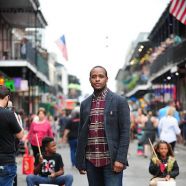





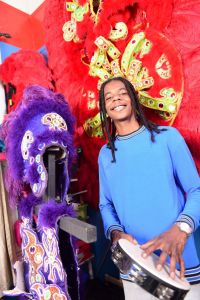
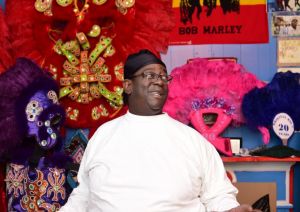
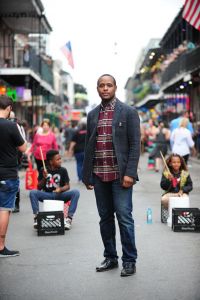
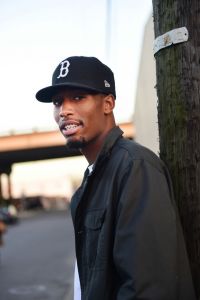
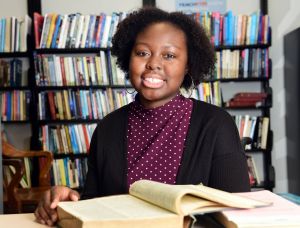
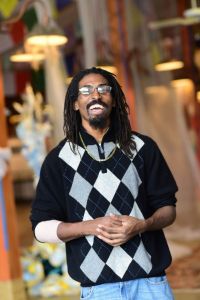
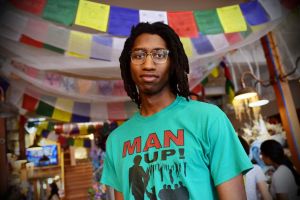
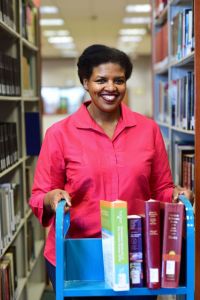
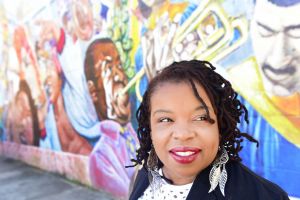
An amazing book—one to read in full!